Earth-directed full-halo CME erupts from Region 2371, G3-Strong geomagnetic storm expected
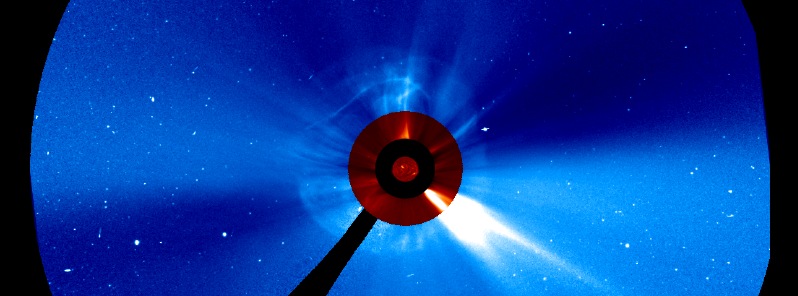
Active Region 2371, now classifiead as Beta-Gamma-Delta and located near the center of the disk, erupted with two M-class solar flares – M2.0 and M2.7 – early on June 21, 2015 producing Earth-directed full-halo Coronal Mass Ejection (CME). Arrival is expected midday June 22.
A Type II and IV radio emission (starting at 02:24 UTC, estimated velocity 682 km/s) were associated with the event. Type IV emissions occur in association with major eruptions on the Sun and are typically associated with strong CMEs and solar radiation storms.
Additionally, two 10cm radio bursts were registered. A 10cm radio burst indicates that the electromagnetic burst associated with a solar flare at the 10cm wavelength was double or greater than the initial 10cm radio background. This can be indicative of significant radio noise in association with a solar flare. This noise is generally short-lived but can cause interference for sensitive receivers including radar, GPS, and satellite communications.
See latest update at the end of the article.

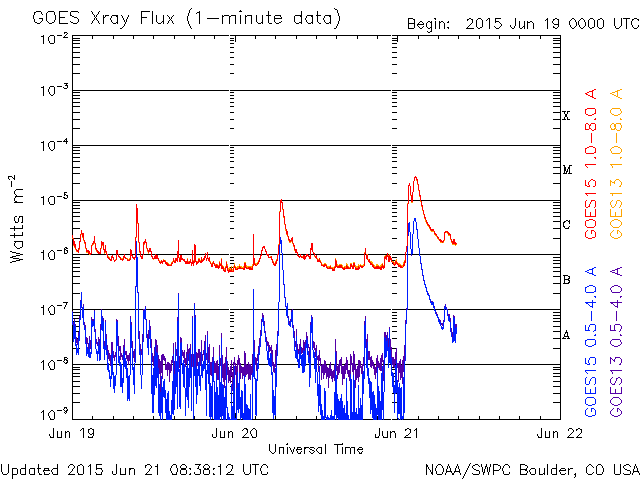

Almost circular halo CME (Earth-directed, expected arrival June 23/24). It was associated with M flare. Nice dimming. pic.twitter.com/lTOODHeZNi
— Halo CME (@halocme) June 21, 2015
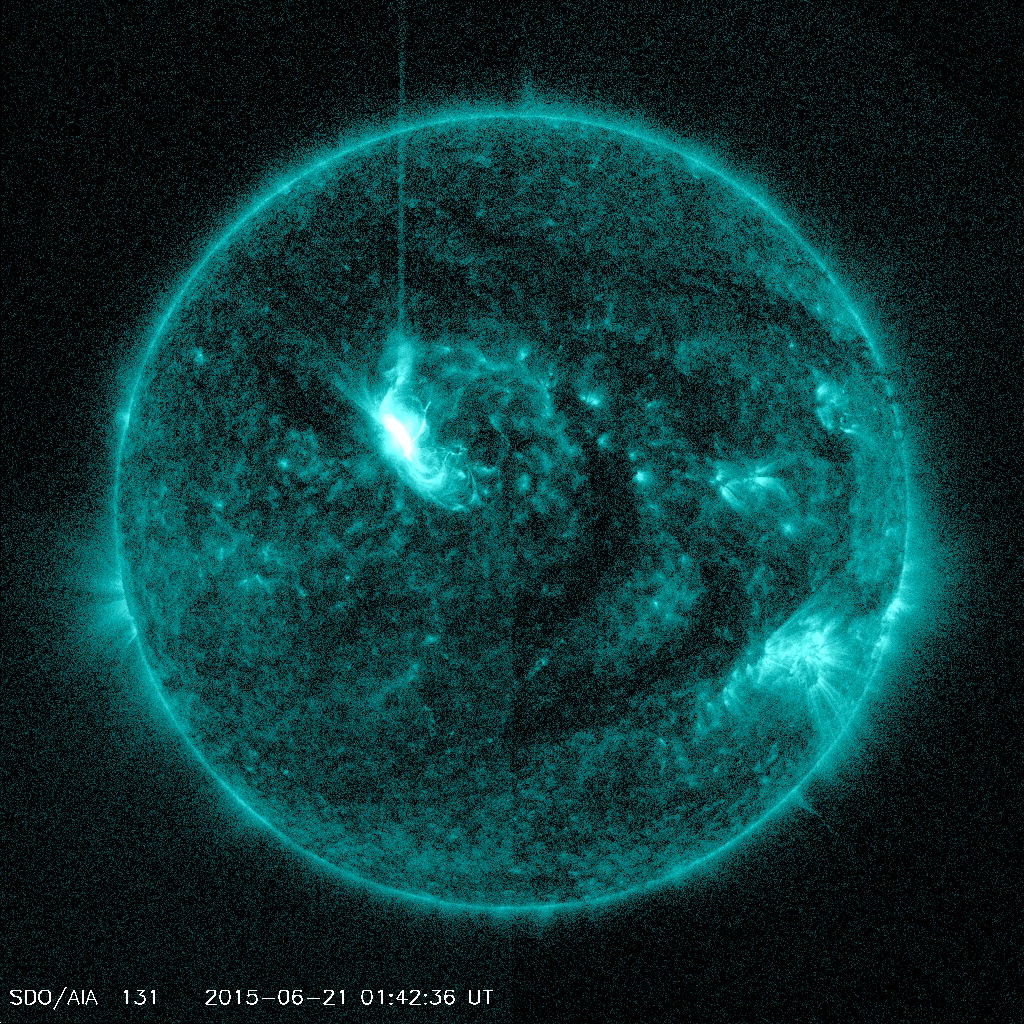

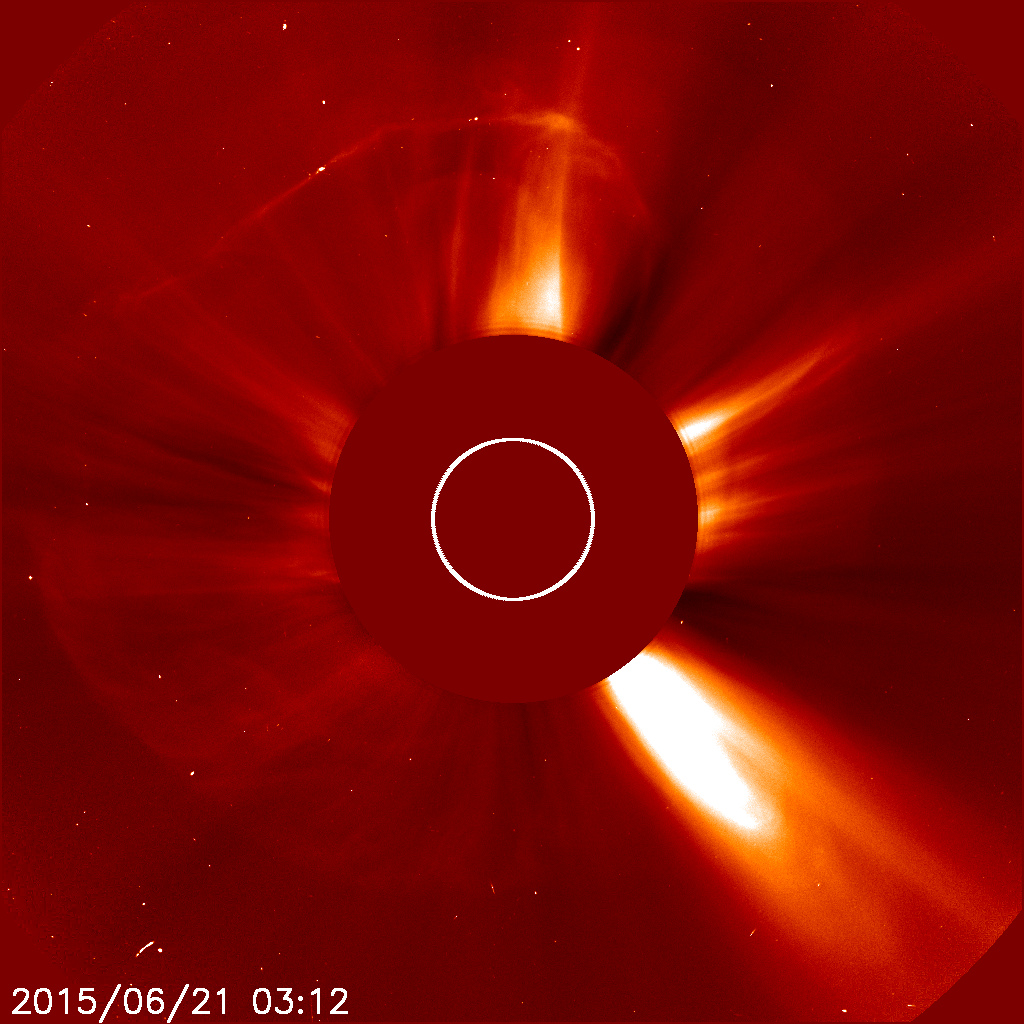

Image credit: ESA/NASA SOHO/LASCO C2.


Image credit: ESA/NASA SOHO/LASCO C3.
***
Space Weather Message Code: SUM10R
Serial Number: 665
Issue Time: 2015 Jun 21 0346 UTC
SUMMARY: 10cm Radio Burst
Begin Time: 2015 Jun 21 0207 UTC
Maximum Time: 2015 Jun 21 0226 UTC
End Time: 2015 Jun 21 0314 UTC
Duration: 67 minutes
Peak Flux: 409 sfu
Latest Penticton Noon Flux: 135 sfu
NOAA Space Weather Scale descriptions can be found at
www.swpc.noaa.gov/NOAAscales
Description: A 10cm radio burst indicates that the electromagnetic burst associated with a solar flare at the 10cm wavelength was double or greater than the initial 10cm radio background. This can be indicative of significant radio noise in association with a solar flare. This noise is generally short-lived but can cause interference for sensitive receivers including radar, GPS, and satellite communications.
***
Space Weather Message Code: ALTTP2
Serial Number: 1015
Issue Time: 2015 Jun 21 0305 UTC
ALERT: Type II Radio Emission
Begin Time: 2015 Jun 21 0224 UTC
Estimated Velocity: 682 km/s
NOAA Space Weather Scale descriptions can be found at
www.swpc.noaa.gov/NOAAscales
Description: Type II emissions occur in association with eruptions on the sun and typically indicate a coronal mass ejection is associated with a flare event.
***
Space Weather Message Code: ALTTP4
Serial Number: 505
Issue Time: 2015 Jun 21 0254 UTC
ALERT: Type IV Radio Emission
Begin Time: 2015 Jun 21 0224 UTC
NOAA Space Weather Scale descriptions can be found at
www.swpc.noaa.gov/NOAAscales
Description: Type IV emissions occur in association with major eruptions on the sun and are typically associated with strong coronal mass ejections and solar radiation storms.
***
Space Weather Message Code: SUM10R
Serial Number: 664
Issue Time: 2015 Jun 21 0205 UTC
SUMMARY: 10cm Radio Burst
Begin Time: 2015 Jun 21 0135 UTC
Maximum Time: 2015 Jun 21 0136 UTC
End Time: 2015 Jun 21 0139 UTC
Duration: 4 minutes
Peak Flux: 409 sfu
Latest Penticton Noon Flux: 135 sfu
NOAA Space Weather Scale descriptions can be found at
www.swpc.noaa.gov/NOAAscales
Description: A 10cm radio burst indicates that the electromagnetic burst associated with a solar flare at the 10cm wavelength was double or greater than the initial 10cm radio background. This can be indicative of significant radio noise in association with a solar flare. This noise is generally short-lived but can cause interference for sensitive receivers including radar, GPS, and satellite communications.
***
Update – M3.8 solar flare at 09:44 UTC:
Region 2367, located in the SSW quadrant, erupted with M3.8 solar flare at 09:44 UTC. The event started at 09:38 and ended at 09:50 UTC.
A Type IV Radio Emission was associated with the event indicating CME was produced.
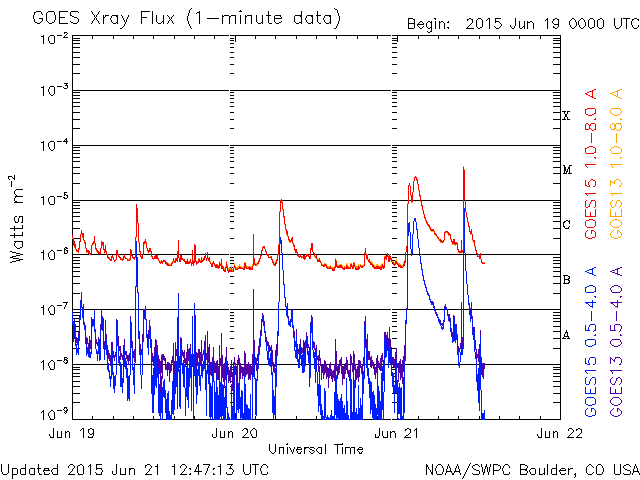

***
Space Weather Message Code: ALTTP4
Serial Number: 506
Issue Time: 2015 Jun 21 1037 UTC
ALERT: Type IV Radio Emission
Begin Time: 2015 Jun 21 0942 UTC
Description: Type IV emissions occur in association with major eruptions on the sun and are typically associated with strong coronal mass ejections and solar radiation storms.
***
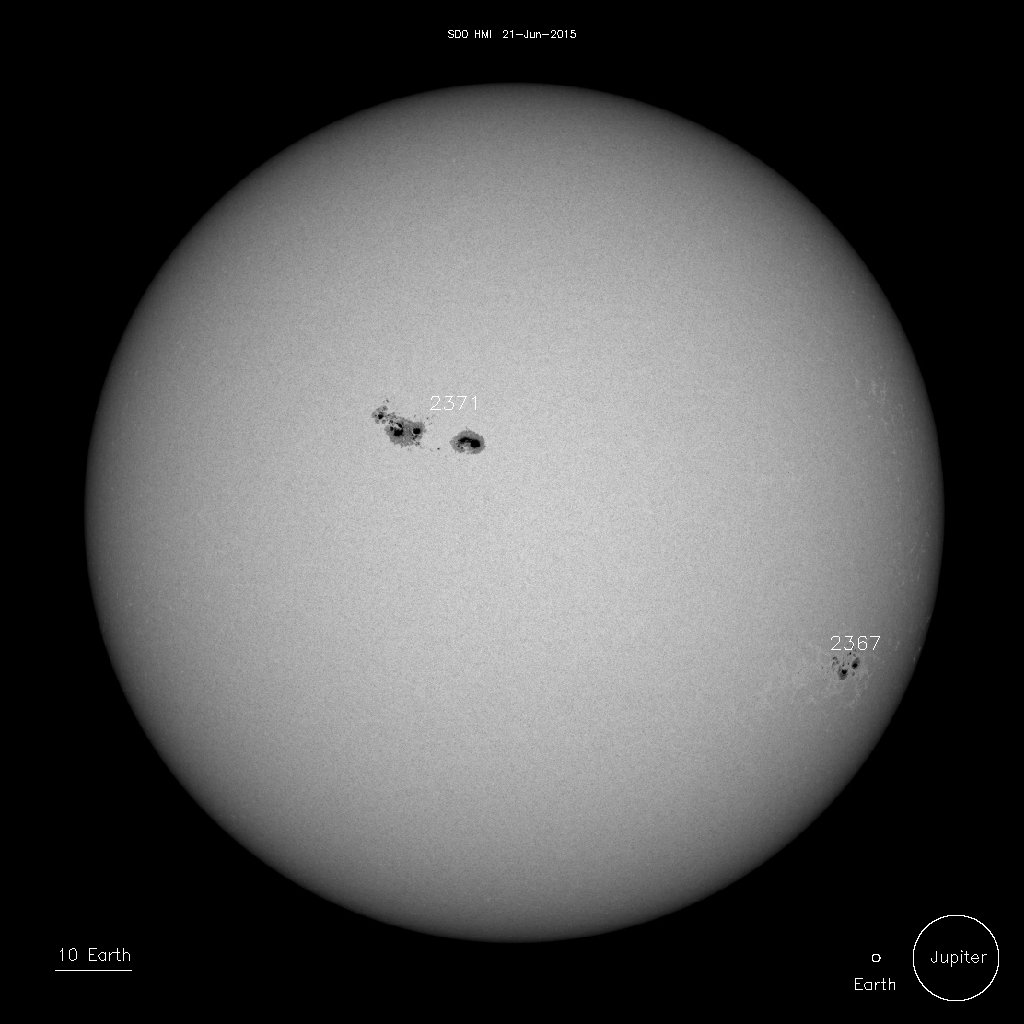

Sunspots on June 21, 2015. Image credit: NASA SDO/HMI.
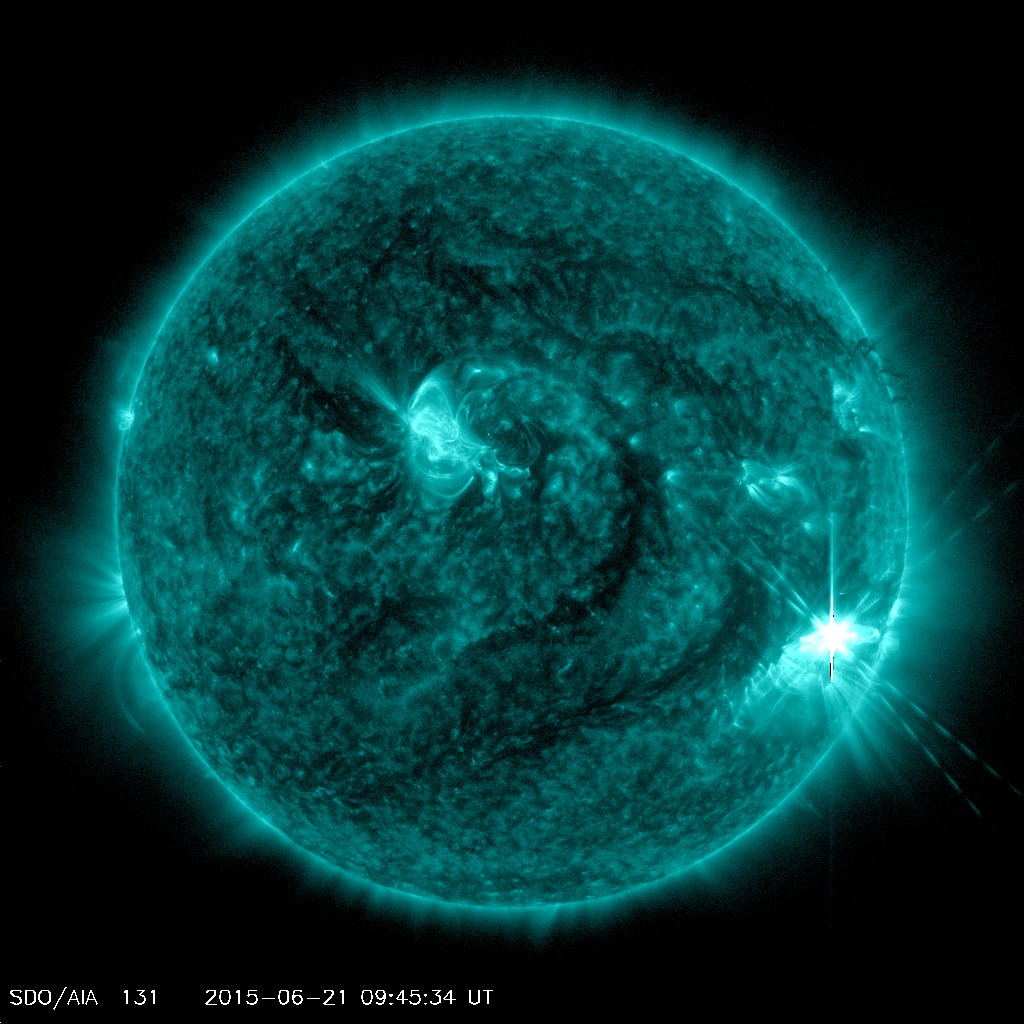

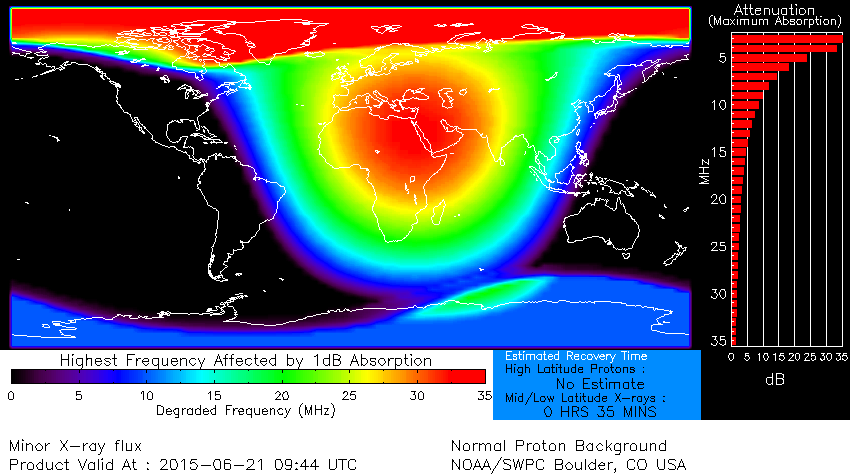

SWPC update at 12:30 UTC on June 21:
A full-halo CME associated with an M2/1N flare was first observed on LASCO coronagraph imagery at 02:36 UTC. Further analysis will be required to determine potential impact at Earth.
SWPC update at 00:30 UTC on June 22:
Region 2371 (N13W00, Fkc/beta-gamma-delta) produced a pair of M2 (R1-Minor) events at 21/01:42 UTC and 21/02:36 UTC respectively. Type II (682 km/s) and Type IV radio sweeps were observed as well as a 490 sfu Tenflare at 21/02:26 UTC. An associated full-halo CME first became visible in LASCO C2 imagery at 21/02:36 UTC.
A subsequent WSA-Enlil model run suggests that this CME will arrive at Earth midday June 22.
G3-Strong geomagnetic storm expected
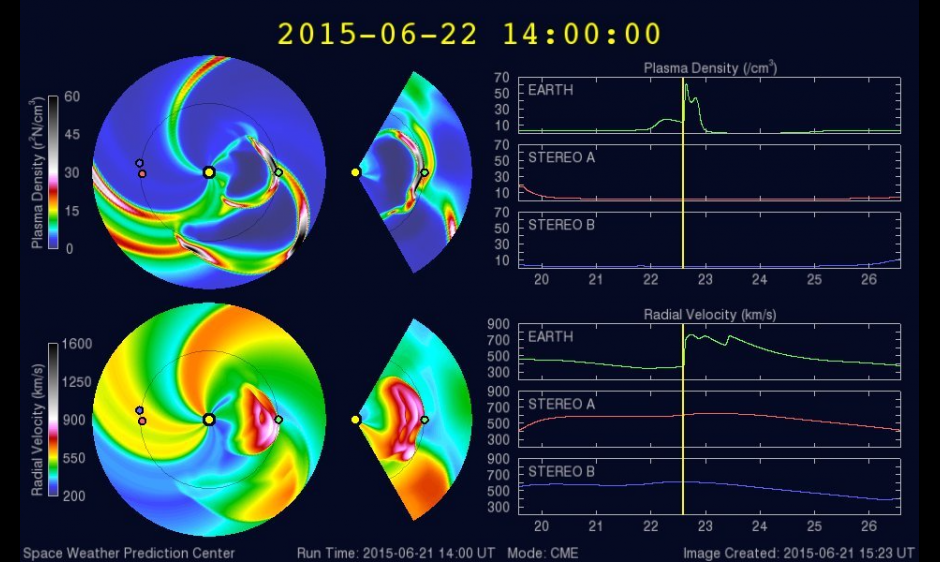

The June 21 full-halo CME is expected to catch up with the two observed on June 18 and 19 bringing them all to Earth in close succession by the UTC day of June 22. A G3-Strong Geomagnetic Storm Watch has been issued for June 22 as well as a G2-Moderate Watch for June 23 as the CMEs make their way past Earth.
***
Space Weather Message Code: WATA50
Serial Number: 53
Issue Time: 2015 Jun 21 1714 UTC
WATCH: Geomagnetic Storm Category G3 Predicted
Highest Storm Level Predicted by Day:
Jun 22: G3 (Strong) Jun 23: G2 (Moderate) Jun 24: None (Below G1)
THIS SUPERSEDES ANY/ALL PRIOR WATCHES IN EFFECT
Potential Impacts: Area of impact primarily poleward of 50 degrees Geomagnetic Latitude.
Induced Currents – Power system voltage irregularities possible, false alarms may be triggered on some protection devices.
Spacecraft – Systems may experience surface charging; increased drag on low Earth-orbit satellites and orientation problems may occur.
Navigation – Intermittent satellite navigation (GPS) problems, including loss-of-lock and increased range error may occur.
Radio – HF (high frequency) radio may be intermittent.
Aurora – Aurora may be seen as low as Pennsylvania to Iowa to Oregon.
***
Featured image: Full-halo CME on June 21, 2015. Image credit: ESA/NASA SOHO LASCOC2&C3, NASA SDO/AIA 304.

What is your recommendation s…
Depends, most of us should just sit back, relax and enjoy.